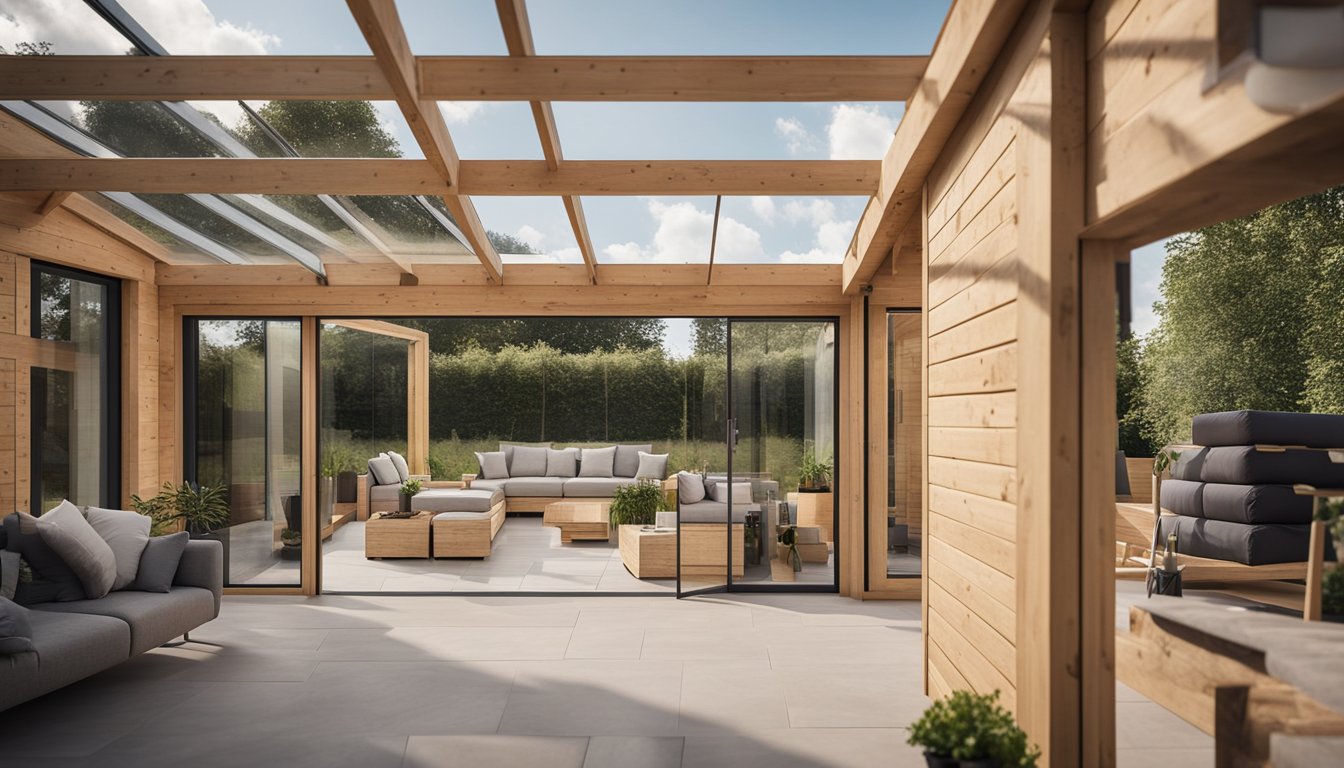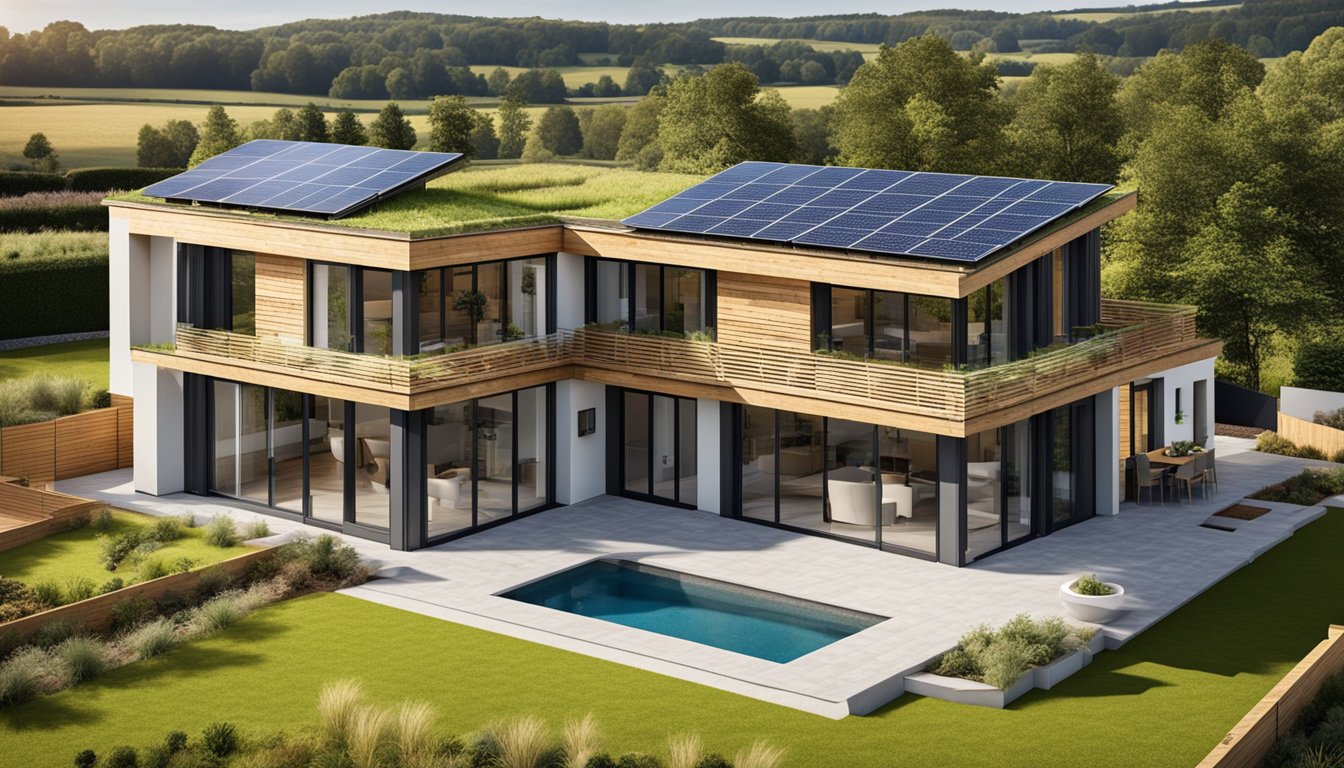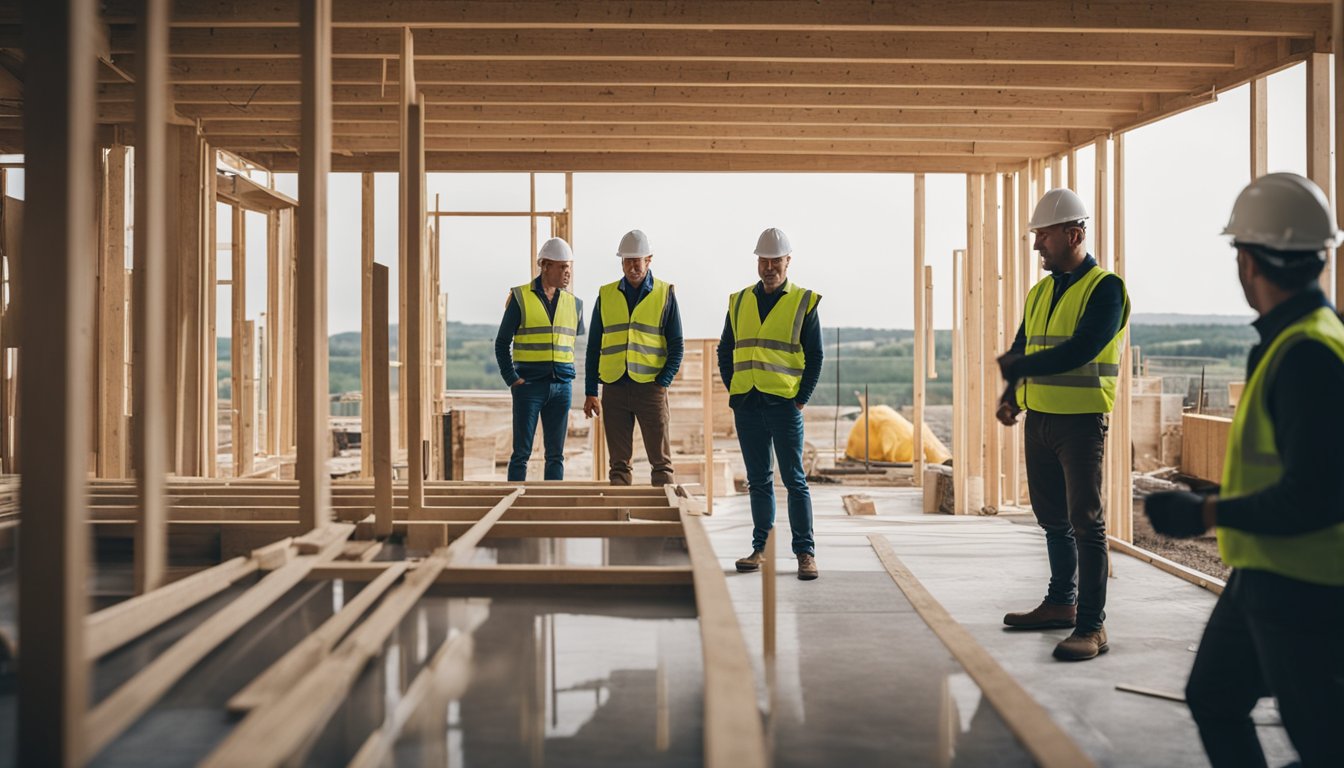Late updated: 01 Oct 2024 13:10
Written by: Eleanor Hartman
Latest Trends in Sustainable UK Home Building Materials: Innovations and Developments
In recent years, the construction industry in the UK has seen a significant shift towards sustainable practices, with new materials transforming how we build homes. As climate change continues to be a pressing concern, finding innovative ways to reduce environmental impact has become imperative. Cross-Laminated Timber (CLT), for instance, is revolutionising the way we think about energy efficiency and building materials by offering both sustainability and strength.

The UK market is increasingly turning to sustainable solutions like bioplastic cladding and smart home technologies to meet new regulatory standards and consumer demands. These advancements not only help in lowering carbon footprints but also ensure that new homes are both durable and cost-efficient. Our exploration will delve into these emerging materials and discuss their impact on the landscape of homebuilding.
As we navigate through these innovations in sustainable UK home building materials, the focus is not just on new materials but on creating a more responsible construction landscape. We aim to provide insights into how these materials are shaping the future of the industry, both in terms of regulatory compliance and practical application.
Key Takeaways
- The UK is adopting sustainable home building materials like Cross-Laminated Timber.
- These materials help meet new regulatory standards and improve energy efficiency.
- The focus is on creating a responsible and sustainable construction landscape.
Emerging Materials in Sustainable Construction

Innovations in sustainable construction are reshaping how we build, creating opportunities to reduce environmental impacts. Natural and recycled materials, innovative composites, and eco-friendly insulations are at the forefront of these changes.
Natural and Recycled Materials
In our pursuit of sustainability, materials like bamboo, hemp, and cork are becoming invaluable for construction due to their renewability. Bamboo offers strength comparable to steel, making it ideal for structural purposes. Hemp, used in hempcrete, provides excellent thermal insulation while absorbing carbon dioxide.
Recycled materials like glass and plastic are gaining traction as well. Recycled plastic can now be transformed into durable building blocks, while recycled glass can be incorporated into flooring and countertops, helping to minimise waste.
Reclaimed wood continues to be popular for its aesthetic appeal and contribution to the circular economy. This approach reduces the need for new resources and supports environmentally responsible building practices.
Innovative Composite Materials
Composite materials such as cross-laminated timber (CLT) and mass timber are revolutionising the construction landscape. CLT panels provide a sustainable alternative to concrete and steel, offering both structural strength and a smaller carbon footprint.
K-briq, made from 90% recycled construction waste, is another innovative product. By diverting waste from landfills, it promotes a circular economy while being an energy-efficient construction option.
Low-carbon concrete alternatives, incorporating waste by-products and alternative binding agents, are continuously being developed to reduce emissions. These innovations help drive a sustainable built environment by replacing traditional, high-impact materials with eco-friendly alternatives.
Green Insulation and Construction Options
Improving thermal insulation is a key focus, with materials like recycled denim, cork, and sheep's wool providing effective and sustainable solutions. These insulations offer excellent energy efficiency, helping to lower energy consumption in buildings while enhancing indoor air quality.
Straw bale and rammed earth provide additional green construction solutions. These materials excel in energy conservation and thermal mass properties. Green roofs, another eco-friendly option, contribute to enhanced insulation, reduced heat urban effects, and increased biodiversity. These options demonstrate our evolving commitment to sustainable building practices, focusing on both practicality and environmental impact.
Sustainability and Regulatory Considerations

In sustainable UK home building, energy standards, circular economy principles, and carbon challenges are crucial. These factors guide constructions' ecological impact, governmental policies, and innovative practices.
Energy Standards and Policies
Energy efficiency in sustainable construction is vital for reducing energy consumption and greenhouse gas emissions. The UK government has set rigorous new energy standards for homes and businesses to support these goals. Energy policies aim to decrease carbon emissions, address the climate crisis, and help achieve net-zero targets.
Compliance with standards such as LEED for environmental performance is essential. It guides building efficiency by evaluating sustainable sites, water efficiency, and renewable energy sources. By aligning with these guidelines, the built environment stakeholders can minimise negative environmental impacts, promote eco-friendly materials, and realise long-term financial savings. Achieving these standards ensures our buildings are not just energy-efficient but also future-ready.
The Role of the Circular Economy
Embracing circular economy principles is imperative in the built environment for sustainable resource use. This approach promotes resource conservation, waste reduction, and a systems-thinking methodology. Circular economy seeks to recycle materials, reducing waste and keeping resources in use for the longest time possible.
Sustainable construction can significantly benefit by integrating circular principles. Sustainable home builders can focus on eco-friendly materials and innovative practices that prioritise the entire lifecycle of construction materials. This includes sourcing, usage, and eventual recycling or disposal. By fostering collaboration among built environment stakeholders, we can create impactful solutions that ensure buildings are designed with a regenerative approach.
Addressing the Carbon Challenge
Carbon emissions are a significant concern within the built environment. With increasing awareness of the climate crisis, addressing these emissions has become paramount. In particular, embodied carbon represents the carbon footprint embedded in construction materials, highlighting the need for carbon-sequestering techniques.
Buildings contribute to a large portion of greenhouse gas emissions, so innovative methods to mitigate these are critical. Solutions include using sustainable materials, improving building operations, and focusing on renewable energy sources. These strategies strive to lower carbon emissions while creating more energy-efficient buildings. As we move towards a net-zero future, reducing the carbon footprint of our construction processes remains a key priority.
Frequently Asked Questions
In the realm of sustainable building materials in the UK, several innovative trends and certifications shape our industry choices. Key challenges continue to influence the adoption of these materials as we strive to align with sustainability goals.
What constitutes the latest advances in eco-friendly construction materials in the UK?
Recent innovations encompass bioplastics like those made from biochar and materials that incorporate recycled or reclaimed waste. These materials aim to reduce carbon footprints and integrate seamlessly into modern designs. The focus is on both renewable resources and material circularity.
How are sustainability concerns shaping the choice of building materials in UK constructions?
Sustainability demands push us towards selecting materials that demonstrate environmental responsibility. Energy efficiency, carbon footprint reduction, and lifecycle impacts are vital considerations. As regulations tighten, complying with eco-standards requires careful material selection.
What green building certifications are most influential in the UK building sector today?
In the UK, certifications like BREEAM and Passivhaus have significant sway. These provide frameworks for assessing the sustainability performance of building projects, addressing energy use, ecological impact, and resource efficiency. Compliance ensures credibility and market differentiation.
Which sustainable building materials have recently seen a rise in usage within the UK?
Materials such as timber, bamboo, and rammed earth are gaining traction due to their renewability and environmental benefits. Innovations in these materials enhance their durability and versatility, making them appealing choices for modern construction projects.
In what ways is the UK's Green Building Council impacting material trends in home construction?
The UK Green Building Council (UKGBC) influences trends by promoting sustainable practices and encouraging the transition towards a low-carbon built environment. Their guidance helps shape policy and industry standards, fostering innovation in building materials.
What are the predominant challenges facing the adoption of sustainable materials in UK construction?
Barriers include cost, lack of awareness, and resistance to change. Advanced materials can be expensive, and understanding their long-term benefits requires education and robust case studies. Additionally, aligning supply chains with sustainability goals remains challenging.